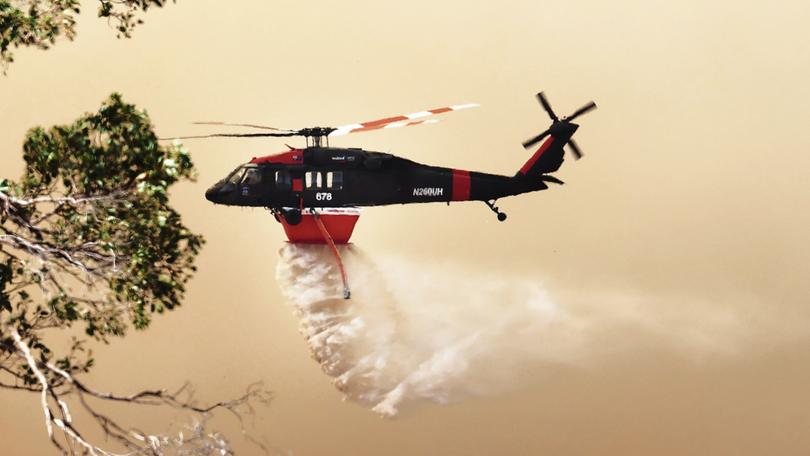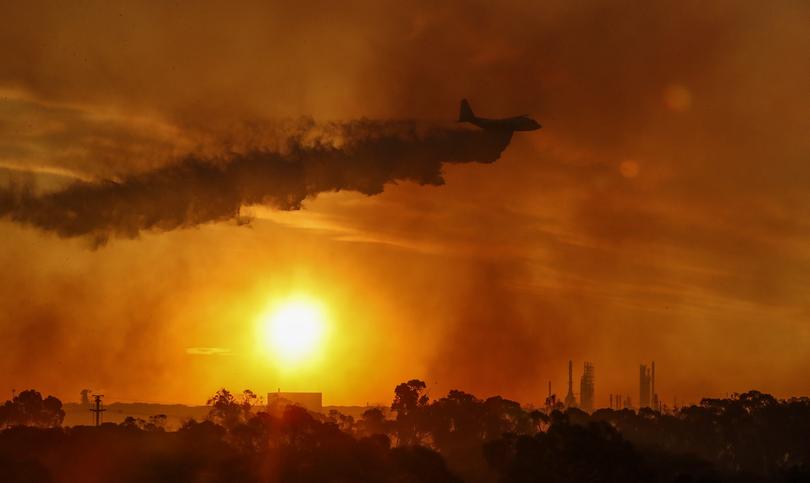JENI O’DOWD: LA fires show the threat which awaits Australia

There is nothing scarier than being utterly powerless in the face of disaster.
When my sister and brother-in-law were overseas, they received an urgent message from their neighbours — volunteer firefighters — asking if they wanted anything saved from their house.
The fire was about to jump the road and engulf the village of Bawley Point on NSW’s south coast. Their response was immediate: forget the house and flee to the beach where others had sought shelter. And then, as if by miracle, the wind changed direction.
Sign up to The Nightly's newsletters.
Get the first look at the digital newspaper, curated daily stories and breaking headlines delivered to your inbox.
By continuing you agree to our Terms and Privacy Policy.At that stage, their village was the first to be affected by the devastating 2019 Currowan fire, and they were fortunate to have volunteer fire brigades from multiple areas battling to save the small community.
The late Terry Snow, a prominent businessman and owner of the 800 hectare Willingpa Park Equestrian Centre near Bawely Point, mobilised land and air support, bringing critical resources to the fight.
Still, the fire raged on, expanding and constantly doubling back on itself in response to unpredictable weather.
In a brief window, when the roads reopened, my relatives returned to Australia and their beloved home to help.
As they drove to Bawley Point, the scene was apocalyptic. Neighbouring communities had not been so lucky — lives, homes, and livelihoods were lost.
It was also an almost extinction-level event for native fauna, leaving the bush eerily silent where once it had been alive with birdsong.
Helicopters and aircraft bombed the flames with retardant, and water was scooped from rivers and dams. Meanwhile, rural brigades fought on the ground with unrelenting courage. The fire took weeks to contain, but the scars remain.
Five years later, the community is still traumatised.
This is just one small story from the 2019 Black Summer bushfires, which ravaged large parts of Australia, with NSW and Victoria bearing the brunt of the devastation.
More than 18.6 million ha burned, 33 lives were lost, and around 3500 homes were destroyed. Entire communities were wiped out, and countless native animals perished in what experts described as an ecological catastrophe.
So it’s no wonder that as we witness the devastation caused by the Los Angeles fires, we ask: could it happen here?
Terrifyingly, the answer is yes. And are we prepared? Even more alarmingly, it seems we are not.
Just like in Australia during the Black Summer, the fires in LA have been fuelled by extreme weather, dry vegetation, and inadequate preparation.
Bushfires in Australia often ignite in wild, inaccessible areas, sparked by lightning strikes in remote regions.
These fires rapidly travel toward settlements, leaving rural brigades with little hope of containing them in time.

As we saw with Bawley Point in 2019, aerial firefighting is one of the few tools capable of reaching these remote areas quickly, suppressing fires before they become uncontrollable.
Thankfully, Australia does maintain a comprehensive aerial firefighting fleet to combat bushfires, comprising various aircraft types with water-bombing capabilities.
Australia bolstered its aerial firefighting capabilities after the Royal Commission into National Natural Disaster Arrangements, which was established following the Black Summer fires.
Significantly, the commission found that the deployment of international aerial resources played a critical role in mitigating the impact of bushfires and recommended enhancing Australia’s aerial firefighting capacity to reduce reliance on international resources.
Since then, Australia has added a Boeing 737 Large Air Tanker to the National Aerial Firefighting Fleet, contracted 177 aircraft for the 2024-2025 season, and expanded the fleet to include versatile multi-use aircraft for fires and other natural disasters.
This fleet is supplemented by additional State-owned and State-contracted aircraft, bringing the total to more than 500 aircraft nationwide.
During another national disaster like Black Summer, there is no doubt we would need to rely on LATs.
Australia operates a fleet of seven LATs for firefighting. But of these, only one — the aforementioned Boeing 737 named “Marie Bashir” and owned by the NSW Rural Fire Service — is Australian-owned; the remaining six are leased from North America during their off-season.
Isn’t this a very risky gamble?
As we are witnessing, with global warming fire seasons are starting to overlap, creating competition for resources and delays in their arrival when every minute counts.
Owning and maintaining a more extensive fleet of LATs and VLATs is eye-wateringly expensive. Still, the cost pales compared to the billions spent on rebuilding after fires, not to mention the human and environmental toll.
Isn’t investing in more aerial firefighting infrastructure arguably as crucial as the billions we spend on defence equipment? After all, fires are a clear and present danger to our nation.
Of course, aerial firefighting planes are not a silver bullet. We still need effective bushfire management and to ensure that residents are bushfire-aware.
However, there is no argument that water bombers provide rapid response, suppress fires in inaccessible areas, and buy precious time for ground crews.
During Black Summer, these aircraft were often the difference between entire towns being saved or obliterated.
Bureau of Meteorology modelling shows Australia is on track to experience one of its hottest summers on record. The summer forecast predicts “unusually high temperatures.”
The Climate Council’s Greg Mullins AO, a former Fire and Rescue NSW commissioner, told news.com.au the “future is pretty grim” for Australia.
“We’re not very cheerful for firefighters. If it doesn’t rain, we worry about extreme fire danger; if it does rain, we go, ‘Oh no, it’s fuel for the future’,” he said.
“We’re one heatwave away from a massive grass fire.”
Hasn’t the LA disaster shown us that the stakes are too high to rely on luck and borrowed planes?
Investing in more LATs and Very Large Air Tankers is crucial in improving Australia’s ability to combat massive fires like those experienced during Black Summer.
The fire season is already here. Are we ready? Or will we once again gamble with disaster?
